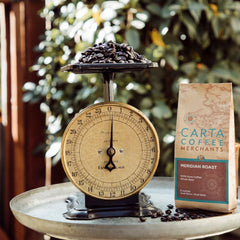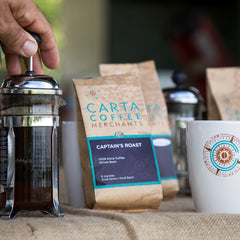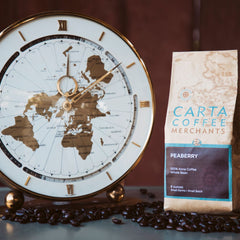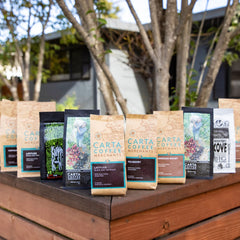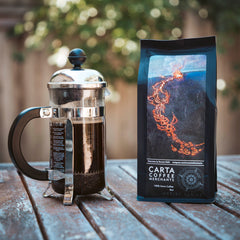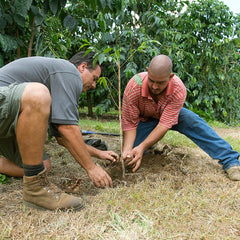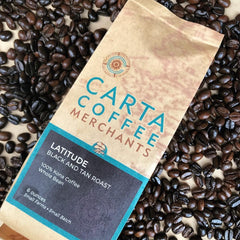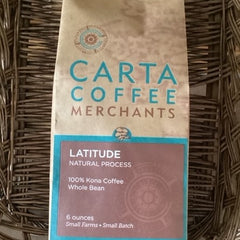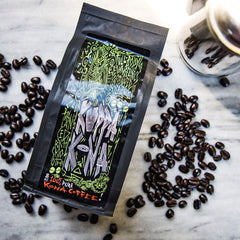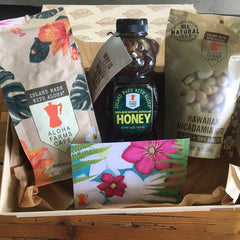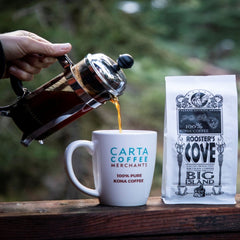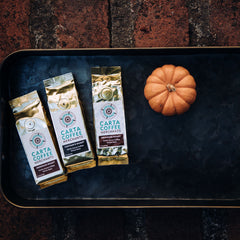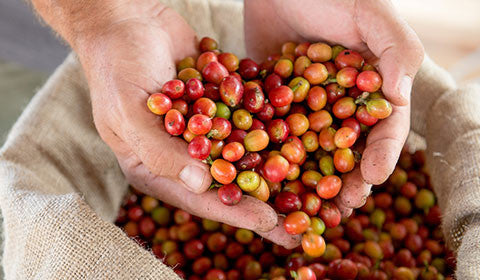Posted on

Legend has it that an Ethiopian goat farmer named Kaldi first discovered the euphoric, energy-inducing effects of the coffee bean back in the 9th Century. He noticed his goats perk up and prance with increased elation after nibbling on the tiny fruit. Kaldi grabbed a handful of the beans, shared his buzzy revelation with friends, and the rest is history!
Whether we truly owe goats gratitude for finding the coffee remains a mystery, but we do know that since around this time, the love for these beans has spread worldwide.
A picky breed, coffee beans thrive best within an equatorial zone commonly called “The Bean Belt.” Mostly confined within borders between the Tropic of Cancer to the north and the Tropic of Capricorn, according to the National Coffee Association, over 50 countries in various are currently growing coffee beans across the globe.
So what makes coffee beans in these coffee-growing countries unique? Can a coffee bean grown in Kenya really taste that different from a coffee bean grown in Kona? Though these are just a few beans off the coffee tree when it comes to the world’s many amazing coffee growing regions, let’s explore a few of the most well-known ones, and discover what makes them stand out from the rest.
Central & South America
Brazil
Hands down the largest coffee producer on the planet with over 51 million bags of beans sold in 2017, or about a third of the world’s coffee, Brazil is South America’s caffeine producing epicenter. The fact that it’s such a large country—the fifth largest in the world, also means it grows an impressive variety of coffee. Unlike smaller regions, it’s harder to pinpoint exact commonalities in flavor, though most tend to taste nutty with an essence of chocolate.
The top areas in Brazil for growing coffee lie along the Atlantic Ocean in the regions of Mogiana, Sul Minas, and Cerrado. With lower elevations and even temperatures, coffee can be harvested and processed nearly year round. Brazil also produces significant quantities of both the milder Arabica beans and the more bitter but cheaper Robusta beans.
Costa Rica
Crisp, bright, and fruity, it’s hard not to love every sip of a Costa Rican coffee. Primarily grown at high altitude in the regions of Naranjo, Valle Central, Tarrazu, Tres Rios, and more, coffee from Costa Rica also stands out thanks to the popularity of fair trade and organic, rainforest friendly production. A strict grading system also ensures only high-quality product is exported boosting its superb international reputation.
As an effort to preserve the integrity of the nation’s bean reputation, it is not permitted to produce anything other than the finest arabica coffee in Costa Rica. Most harvesting and production is also done on small farms or fincas. Needless to say, if you’re seeking a coffee bean with an undisputedly high-quality from a country who truly cares about producing a darn good bean, Costa Rica is always a great choice.
Colombia
One of the most famous coffee growing countries, Colombia’s terrain was made to grow incredible coffee. Its high elevations, rich, volcanic soil, and year-round mild climate became a point of pride and tradition as soon as Colombians discovered how perfect their landscape was for coffee production.
Most Colombian coffees are well-balanced, taste sweet with caramel notes and have a touch of acidity. They are mostly grown near the cities of Caldas, Risaralda and Quindío, or the Zona Cafetera, which has blossomed into a thriving tourism market eager to let visitors explore their fincas, and enjoy their coffee right from where it was grown.
Arabian Peninsula
Yemen
Exactly when and where coffee got its big break will always be under some dispute. However, there’s no denying that the Arabian Peninsula is where it first became commercially sold, traded, and shared with the rest of the world. Specifically, the Yemeni port of Mocha became an important early launching point for coffee beans, making Yemen an early major player in the game.
Today, regional turmoil has battered the reputation and distribution for Yemeni coffee beans. However, those that have tried these beans have called them some of the world’s best. A few hopefuls are also determined to thrust coffee from Yemen back into the international spotlight. It may come at a cost as cups often run around $16, but considering its rarity and contribution in reconstructing a once elite coffee growing region, many are happy to fork over a few extra bucks.
Africa
Kenya
It may still be a largely tea drinking nation, but some Kenyans realized the potential their climate and terrain had when it came to growing coffee and made this now booming industry a reality. Though not introduced to the area until the 1900s, today Kenya boasts some of the highest-quality coffee on Earth.
Mostly centered on the slopes of the 17,000 foot Mt. Kenya and grown without shade, Kenyan coffee beans have a sharp and citrusy acidity, fruity tones, and floral aromas. Almost entirely arabica beans, some flavor profiles do overlap with Ethiopian coffee beans, but with an even fuller-bodied essence.
Ethiopia
Often still harvested from wild coffee trees, Ethiopia is often considered the birthplace of coffee. Fruity, rich, and full of complex flavors evoking red wine and berries, Ethiopian flavors are distinct amongst other coffees. Most operations have stuck with their tried and true “natural” or “dry processing” methods. This means they put the fresh picked coffee out to dry immediately after being plucked—fruit, skin, and all—which can bring out deeper flavors.
Typically grown in the regions of Sidamo, Harrar, and Kaffa (where the name coffee comes from), coffee isn’t just an important industry—it’s an integral part of the culture. Every member of the community takes part in the fascinating and complex Ethiopian coffee ceremonies. As a hostess roasts and grinds the coffee by hand, participants gather around to connect over a tradition spanning centuries.
Asia
Indonesia
Sumatra. Java. Sulawesi. If you know any coffee regions, there’s a good chance you’ll know at least some of these. With over 17,500 islands spanning 3,500 miles, Indonesia is the largest country in Southeast Asia—and it’s perfect for growing incredible coffee. It should be no surprise that it’s the fourth largest coffee growing region on the map
Like Brazil, Indonesia boasts a vast variety of coffee profiles thanks to its immense size alone. Overall, expect complex flavors with deep, earthy, bold tones and a dense body. These profiles also make this a wonderful dark roasted bean. And if you’re seeking something a little different, fine aging coffee beans is more popular in Indonesia than other regions.
North America
Hawaii
Though there have been some attempts to grow in California, and Puerto Rico does have a small industry, Hawaii is by far the kingpin of coffee production in the United States. Coffee grows on the other Hawaiian islands, but the undisputed hub is in Kona on the Big Island. Grown in black, volcanic soil on highly-elevated misty mountain sides, most Kona coffees will have complex floral aromas with a bright, nutty and slightly sweet taste, low acidity and a medium body.
True, authentic 100% Kona coffee will be more expensive per pound than many other coffee-growing regions, but for good reason. There are strong regulations for what can be labeled as 100% Kona coffee vs. Kona blends, assuring consumers that they’re getting the real deal. Also, as wages in the U.S. are higher than other regions, and the land area in Kona is substantially smaller than say—Indonesia—which makes it a rarer bean, prices will be higher.
Interested in trying out some 100% Kona coffee for yourself? Try the sustainably grown and harvested coffee beans from Carta Coffee Merchants. Run by a passionate crew of coffee fanatics, we’re dedicated to providing only the highest quality Hawaiian coffee possible from one of the greatest coffee growing regions on Earth.


